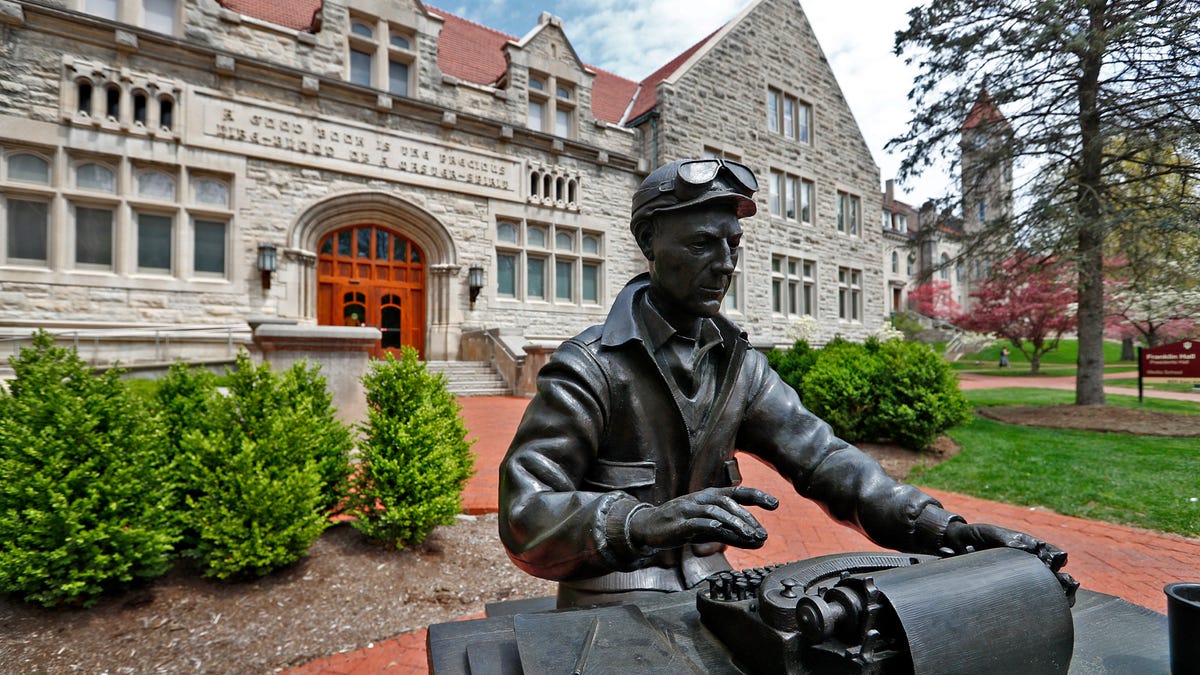Indiana General Assembly: How the state legislature works
The Indiana General Assembly is a bicameral legislature that meets annually to pass laws. Here’s a closer look at what state lawmakers do.
A handful of Indiana’s public colleges have proactively decided to cut or “consolidate” about a fifth of the state’s degree programs ahead of a new state law, introduced at the very end of the legislative session, that takes effect July 1.
That’s roughly 400 of the 2,200 degree programs across state institutions on the chopping block, the Commission for Higher Education announced June 30, because they don’t have enough students enrolled in them. This is being billed as part of a Gov. Mike Braun agenda item to direct students to the most “in-demand” fields.
“This will help students make more informed decisions about the degree they want to pursue and ensure there is a direct connection between the skills students are gaining through higher education and the skills they need most,” Braun said in a press release.
The language dictating this change joined a slew of other directives added to the state budget the day before the legislative session concluded, from adding “productivity” reviews to the tenure process to giving Braun appointing power over the entire Indiana University board of trustees. This particular provision about degree programs allots a student enrollment quota they must meet in order to be continued automatically, or else they need an exemption from the Commission.
The quota is a three-year average of 10 students for an associate’s degree program, 15 for a bachelor’s degree program, seven for a master’s degree program and three for a doctorate program.
The Commission announced that six public institutions have “voluntarily submitted” 400 degrees for “elimination, suspension, or merger/consolidation,” either immediately or for a future promised date. Students in degree programs targeted for eventual elimination will get the opportunity to finish their studies, guidance from the commission states.
These 408 degrees are merely what colleges have decided to take “early action” on, before the new state law must be implemented. In its guidance to institutions, the commission said it didn’t expect this voluntary round to encapsulate all “under-threshold” programs.
An analysis of publicly available data conducted by IndyStar indicates that a strict application of the quotas could lead to significantly more degrees being cut. For example, more than half the bachelor programs didn’t meet the threshold, including a nationally renowned soil science program at Purdue.
Which degree programs have been eliminated?
The six institutions that voluntarily submitted plans to cut or consolidate programs are the following, along with the number of programs affected:
- Ball State University: 51
- Indiana State University: 11
- Indiana University (all campuses): 249
- Ivy Tech Community College: 10
- Purdue University (all campuses): 83
- University of Southern Indiana: 4
Among these, 75 programs are being eliminated, 68 of which had zero enrollments this year; 101 programs are being suspended, which means they will be taught only until the students currently in them are done and will then be eliminated; and 232 programs will be merged or consolidated.
Merging or consolidating means a college could opt to absorb under-performing degree programs into other existing degree programs, or it could merge two or more under-performing degree programs into a consolidated new program.
The list of degrees slotted for elimination range from the niche, like dance at IU Bloomington and recreation therapy at Indiana State University, to seemingly in-demand fields like a masters in software engineering at Ball State and a bachelor’s in biotechnology at IU Indianapolis.
Language and fine arts degrees feature heavily on the list, as do education-related degrees. Bachelor’s degrees comprise the largest category on the list.
The Commission says it previously gave each state institution a list of degree programs that are “under-threshold.” After July 1, colleges will have to seek approval from the Commission to continue any degree programs on that list that they haven’t already voluntarily cut.
Chris Lowery, head of the commission, said in a statement that this move is an effort to improve quality and cost of institutions’ offerings.
“Our institutions want to ensure the programs they’re offering are responsive to student demand and fit the needs of Indiana’s evolving economy,” he said. “The primary beneficiaries of this work will be students, who face an overwhelming number of degree programs as they make their educational and career decisions.”
The picture may be more complicated at small or regional campuses that have fewer students in general, even though they offer what are typically viewed as high-demand fields, like STEM.
The language in the state budget was not subject to public testimony during the legislative session.
Contact IndyStar state government and politics reporter Kayla Dwyer at [email protected] or follow her on Twitter @kayla_dwyer17.
